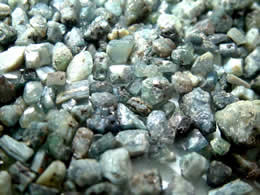Rare Alexandrite Gems

Introduction
Alexandrite, a rare and captivating gemstone, stands out for its remarkable color-changing properties. Picture this: it shifts from lush green in daylight to a rich red or purplish hue under incandescent light. First discovered in Russia's Ural Mountains in the 1830s, this variety of chrysoberyl gets its unique optical effect from trace amounts of chromium. With limited deposits mainly in Russia, Brazil, and Sri Lanka, alexandrite's scarcity and mesmerizing beauty make it a prized item for gem collectors and jewelry fans, often fetching high prices. For more detailed insights, explore our comprehensive alexandrite guide.
Color Properties
Alexandrite is known for its strong pleochroism, showing colors like emerald green, red, and orange-yellow. It has the unique ability to switch hues - from one in artificial light to another in natural daylight. This shift from red to green happens because the gem absorbs light in the yellow and blue parts of the spectrum. Typically, it looks emerald green in daylight and turns raspberry-red under incandescent lighting. Pretty fascinating how light plays tricks with it, right?
History and Discovery
According to a popular but likely apocryphal story, alexandrite was discovered by the Finnish mineralogist Nils Gustaf Nordenskjold (1792–1866) on the tsarevitch Alexander's sixteenth birthday on April 17, 1834, and named in honor of the future Tsar Alexander II of Russia. In reality, Nordenskjold first identified it - though not discovered it - probably around 1831. It was Count Lev Alekseevich Perovskii (1792–1856) who actually named the gem alexandrite.

Physical Properties
Alexandrite is a variety of chrysoberyl, boasting an excellent hardness of 8.5 on the Mohs scale. Chrysoberyl has a refractive index of 1.746–1.763 and a density or specific gravity of 3.70–3.78.
Alexandrite is very rare due to its chemical makeup. While it's a form of chrysoberyl, it includes an extra trace element beyond iron and titanium. Chromium is what gives it that emerald-green hue in daylight. Instances of alexandrite showing chatoyancy - or the cat's eye effect - are known but extremely uncommon. Learn more about unique gems like alexandrite in our guide to rare gemstones.
Sources and Rarity
The original source in Russia's Ural Mountains has been exhausted. A key deposit was found in 1987 in Minas Gerais, Brazil, with others in Burma, Madagascar, Sri Lanka, and Tanzania.
Alexandrite seldom appears in large sizes. The biggest cut example weighs 66 carats and resides in the Smithsonian Institution in Washington, D.C.
Frequently Asked Questions
What causes alexandrite's color change?
The color shift is due to trace amounts of chromium and the gem's absorption of light in the yellow and blue spectrum parts, appearing green in daylight and red under incandescent light.
Where was alexandrite first discovered?
It was first found in Russia's Ural Mountains in the 1830s, with the name honoring Tsar Alexander II.
How hard is alexandrite?
Alexandrite has a hardness of 8.5 on the Mohs scale, making it durable for jewelry.
Why is alexandrite so rare?
Its rarity stems from a specific chemical composition requiring chromium, plus limited global deposits.
What are the main sources of alexandrite today?
Key deposits are in Brazil, Burma, Madagascar, Sri Lanka, and Tanzania, after the Russian sources were depleted.

